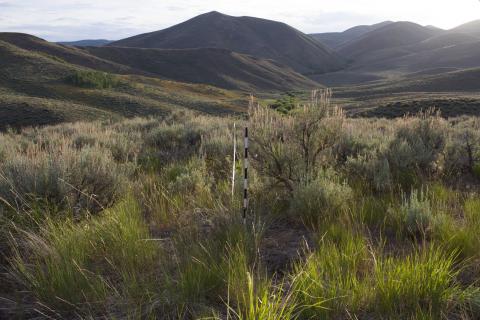The distribution of forage species varies with environmental gradients and disturbance events across
landscapes. However, relationships between species distribution and environmental gradients are
relatively unknown across broad landscapes. Therefore, we created broad-scale predictive models based
on fine-scale data to understand the factors that inform forage species distributions across landscapes.
These existing models were built using limited data on forage species occurrence over a large spatial
extent (i.e., the state of Idaho). To understand how grazing and browsing by large herbivores (wild and
domesticated) interact with abiotic conditions to influence forage distribution, we must validate these
existing models. Model validation requires that we conduct additional vegetation surveys within
sagebrush systems in Idaho.

